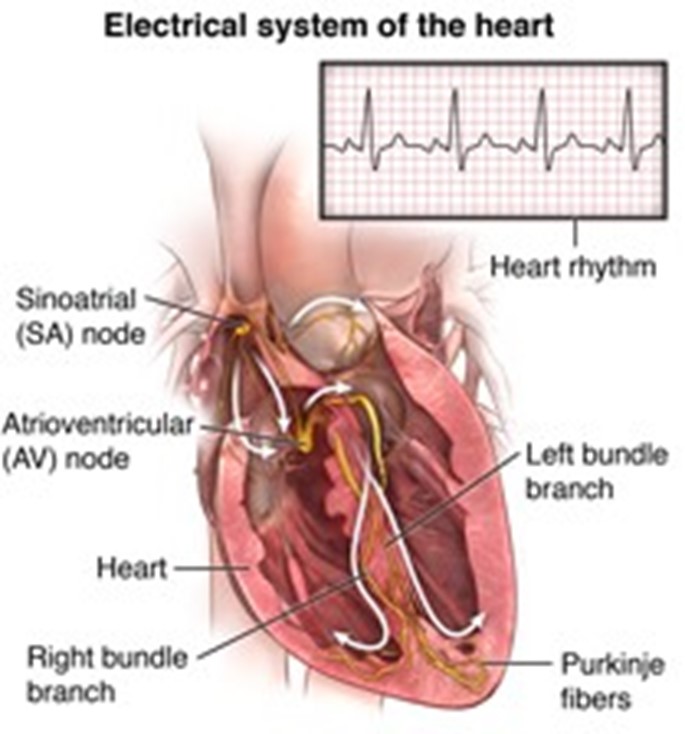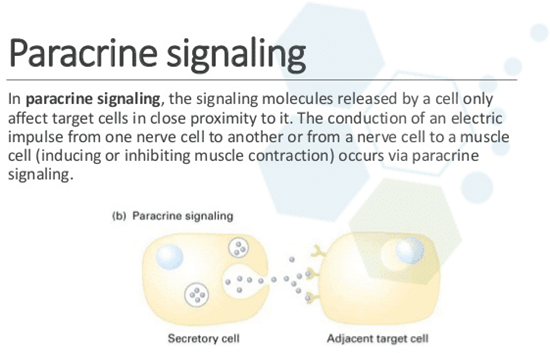The normal pacemaker of the heart is the:
Purkinje fibers.
AV bundle.
Sinoatrial node.
Atrioventricular node.
The Correct Answer is C

The sinoatrial (SA) node is the natural pacemaker of the heart.
It generates electrical impulses that cause the heart’s chambers to contract, setting the heart rate.
The SA node typically generates 60–100 heartbeats per minute when a person is at rest.
Choice A is wrong because Purkinje fibers are part of the electrical conduction system of the heart that carries impulses to the ventricles.
They are not the primary source of impulses.
Choice B is wrong because the AV bundle (also called bundle of His) is another part of the electrical conduction system of the heart that connects the atria and the ventricles.
It is not the natural pacemaker of the heart.
Choice D is wrong because an atrioventricular node is a relay station between the atria and the ventricles that delays the electrical impulses from the SA node.
It can act as a backup pacemaker if the SA node fails, but it is not the normal pacemaker of the heart.
Nursing Test Bank
Naxlex Comprehensive Predictor Exams
Related Questions
Correct Answer is D
Explanation
Paracrine secretions are chemical signals that affect only nearby cells.

They are released by the sending cell and diffuse through the extracellular space to the target cell, which has a specific receptor for the signal.
Paracrine signaling is a form of local signaling that occurs in multicellular organisms.
Choice A is wrong because autocrine secretions are chemical signals that act on the same cell that produced them.
Autocrine signaling is also a form of local signaling, but it involves cell signaling itself.
Choice B is wrong because endocrine secretions are chemical signals that are secreted into the blood and act at long distances.
Endocrine signaling is a form of long-range signaling that involves ductless glands that secrete hormones.
Choice C is wrong because exocrine secretions are non-hormonal substances that are secreted into ducts to the external environment.
Exocrine signaling is not a form of cell-cell communication, but rather a way of releasing substances such as sweat, saliva, or digestive enzymes.
Correct Answer is B
Explanation
Monocytes are a type of agranulocytes, which are white blood cells that lack visible granules in their cytoplasm.
Agranulocytes also include lymphocytes, which are involved in adaptive immunity.
Choice A is wrong because basophils are a type of granulocytes, which are white blood cells that have granules in their cytoplasm.
Granulocytes also include neutrophils and eosinophils, which are involved in innate immunity.
Choice C is wrong because neutrophils are also a type of granulocyte.
Neutrophils are the most abundant white blood cells and are responsible for phagocytizing bacteria and fungi.
Choice D is wrong because eosinophils are also a type of granulocytes. Eosinophils are involved in allergic reactions and parasitic infections.
Normal ranges for white blood cells vary depending on age, gender, and health status, but generally, they are between 4,000 and 11,000 cells per microliter of blood.
Whether you are a student looking to ace your exams or a practicing nurse seeking to enhance your expertise , our nursing education contents will empower you with the confidence and competence to make a difference in the lives of patients and become a respected leader in the healthcare field.
Visit Naxlex, invest in your future and unlock endless possibilities with our unparalleled nursing education contents today
Report Wrong Answer on the Current Question
Do you disagree with the answer? If yes, what is your expected answer? Explain.
Kindly be descriptive with the issue you are facing.
